An F-35 has conducted the first Shipborne Rolling Vertical Landing on-board aircraft carrier HMS Queen Elizabeth.
The Shipborne Rolling Vertical Landing (SRVL) is a British endeavour—a capability at least a decade in the making—that will allow pilots to return to ship with more stores on the aircraft after a mission.
It is a process designed to land jump-jet aircraft that uses both the vertical thrust from the jet engine and lift from the wings, thus maximising the payload an aircraft can return with and stopping the financial waste that comes with dropping expensive weaponry in the sea in order to land vertically.
Since June, The F-35 Patuxent River Integrated Test Force (ITF) team had focused on live flying workups refreshing their skills on day and night field carrier landing practices, ski jump takeoffs and vertical landings in preparation for the arrival of HMS Queen Elizabeth.
Earlier in the year, the team also conducted rolling vertical landings in preparation for trials on HMS Queen Elizabeth, according to a recent release.
“[Rolling vertical landings] are an important phase of the workups because another unique aspect of going to the Queen Elizabeth Class carrier is that we will be conducting experimental testing of a novel recovery landing technique—the Shipborne Rolling Vertical Landing” said Royal Air Force Sq. Ldr. Andy Edgell, FOCFT (FW) lead test pilot at the Pax River ITF.
“SRVL tests are truly experimental. It involves landing a fast jet onto an aircraft carrier with forward relative speed but without the braking assistance typically provided by an arresting gear and hook. It’s going to be a really rewarding moment for British aviation to watch that procedure actually take place.”
It can also reduce the level of wear on the lift engines and extend their operational life. Similarly, it can reduce the amount of wear upon the deck surface of a carrier caused by the downward jet exhaust from vertical landings.


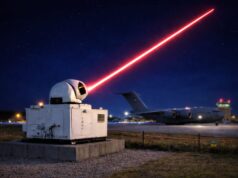
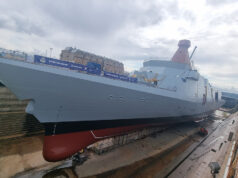
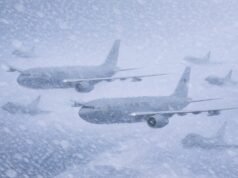

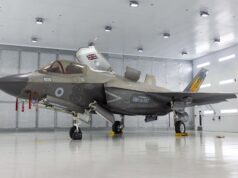
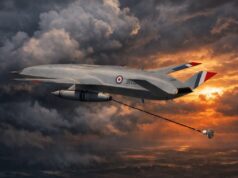

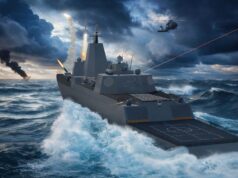
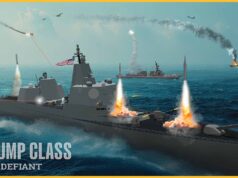
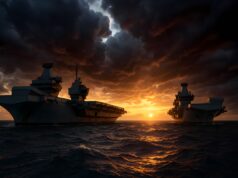

Fantastic news, progress and confidence really must be going well!
Night flying and RVL’s, what a great start to the fixed wing flying trials.
Great news, after CATOBAR this is the next best way to do carrier ops. Good bit of innovation.
Having watched the video then compared it the F35C landing below, SRVL looks more controlled.
https://www.youtube.com/watch?v=STVAM85y3i0
Agree much more controlled and also a very short distance to stop (at least with this first trial) . CATOBAR gives you more options with other planes on top of f35b that is what I meant. Does a CATOBAR landing give you more options with respect to bring back weight?
Agree that it looks very controlled, I was quite surprised just how controlled, but as the first landing I assume this was with zero simulated weapons load and a light-ish fuel load. The characteristics of the landing will change as the bring-home loads are increased which I assume they will be in subsequent tests. Higher loads means more mass means more kinetic and potential energy needing to be shed during the landing.
Not sure on the CATOBAR question. In both instances you would dump fuel. But with CATOBAR you would need to allow for a bolter so wouldn’t dump as much fuel. CATOBAR does give better overall performance ie range and load but it’s hard on the airframe.
Does raise a question is there a bolter procedure for SRVL.
CATOBAR does give you more options as to aircraft types you can fly off the carrier. But they also represent single points of failure. If the catapult or arrestor malfunctions or is damaged then the carrier’s air wing is grounded at best.
The F35B needs neither and could even take off with a reduced weapons load without the ski-jump if that was damaged or destroyed.
Fantastic, been looking forward to this. Was much slower than I thought it would be. I wonder what the wind speed over the deck was.
Very stable approach and touchdown, actually looked a softer landing than a VL.
Does this approach take some of the massive heat away or distribute the exhaust plume over a wider area. Eg is the deck better protected?
If so brilliant. Will also mean the thermal treated deck areas can be reserved for vertical landings.
Hi Mr. Bell. As I understand it that is one of the main advantages of the SRVL. Even with the best heat resistant coatings in the world the traditional landing must stress the coating and substrate severely not only in degrading film build but in causing delamination over time per the huge temperature gradient through different materials
It should also help preserve a tires a longer, currently they have to be replaced at a ridiculous rate I think its in the single figures from vertical landings. I was also suprised to see the plane stop in such a short distance (on a light fuel load I’m sure) as there is no reason the USMC could not do the same thing on the wasp class unless their decks are over crowded.
Jings, lovely, so effortless. And all the effort that’s gone in to make it so effortless.
Say the F35 flew off the old invincible, could this method be used on such a small deck? I know it couldn’t be done safely with harriers and also if it can be done on a small deck, what are the chances other navies will adopt this method?
Im fairly sure South Korea and Japan will be watching this with great interest to possibly incorporate onto the helicopter carriers they have………………
Uk should get a sales commission if those countries order!
I believe the heat resistant deck coating for the carriers is made by a British company, so hopefully some export orders coming their way.
F-35 program is 15% British so they get that cut of sales regardless of whether they promoted them or not.
Keith – looking at how effortless that looked id say landing on an Invincible class or equivalent would be more than possible,very impressive indeed .
The RAF GR3s did a number of rolling landings on Hermes when they were fitted with the wet film recce pod, under-wing fuel tanks and sidewinders. The Hermes had the space, the Invincible less so. The problem with the smaller ships is decking space, to provide a sufficient length of “runway” you’d need a clear deck with everything parked to the side. with the harrier’s smaller wingspan and overall size it wasn’t such a problem. The F35B is much bigger and may cause parking issues on the smaller LPDs.
Like seeing the helicopter taking off at the same time at the F35 is touching down.
Plenty of room for manoeuvre by both
Rescue helicopter
What struck me straight away was the speed.
Slower than I expected.
Hi Danielle,
I think they were only planning to make some initial exploratory RVL’s if the flight test program was running well.
Clearly it is, so that’s great news.
I think these first RVL’s will be at minimum weight and slower than usual.
Gets us ahead of the curve for PoW flight trial next year.
Makes you proud to be British and a big thank you to our American friends and colleagues for their invaluable assistance.
Agree with that John.
(Chris H) Daniele – I thought that until I realised the camera angle does not give any indcation of ship peed let alone air speed. So the aircraft could be doing 25 Knots ship + 10 Knots Air + 20 knots deck speeds = 55 knots aircraft air speed.
Amazed thought this was due to be tested on POW, this must mean they are well into trials program.
The future!
It’s hard to tell from the size of the F35B, but it looked like about 20/30 knots touch down.
I think operational speeds at weight will be 40+ knots touch down with the ship at 25 into the wind.
So if we allow for some wind into the equation, then wind under the wings at 75 knots, so about 50% lift from the wings.
I believe the extra lift allow 7000ibs more to be brought back.
Good progress but baby steps at this time as to be expected. I imagine much of the future testing will be to establish an operational envelope for faster approach speeds under different loads and flight conditions including weather and sea state. The faster the plane can land safely the greater the lift generated from the wings with the benefits that brings.
Interesting that even though this first landing seems relatively slow (versus rolling landing at Marham when jets first arrived in UK) it still seems to be a much faster overall landing process than when the F-35B has to stop in the hover and then land. So perhaps greater operational efficiency from SRVL as well as the stores retention benefit.
(Chris H) – Having seen this I still think our F-35s should have the ‘C’ nose twin wheel arrangement and its larger but folding wings would enable even higher return weight.
great progress though and I am quite surprised its this early. Well done all.
Chris- I’ve posted along these lines before, a F35D which has the larger wings and able to use the lift fan as a thrust reverser to reduce the braking load. I also believe that the lift fan size could be reduced, technology has moved on so it not inconceivable that RR could design an smaller lift fan that would improve the F35B load and range. The only real hope is the US Marines like SRVL so much they get behind an F35D version.
Another interesting observation is the aircraft appears not to be using the role posts to stabilise the approach and landing, you can see the control surfaces making the corrections on the approach.
[…] There’s a video of the first SRVL on HMS Queen Elizabeth here. […]
(Chris H) – Surprised the other article on SRVL failed to mention Bedford Arrays …